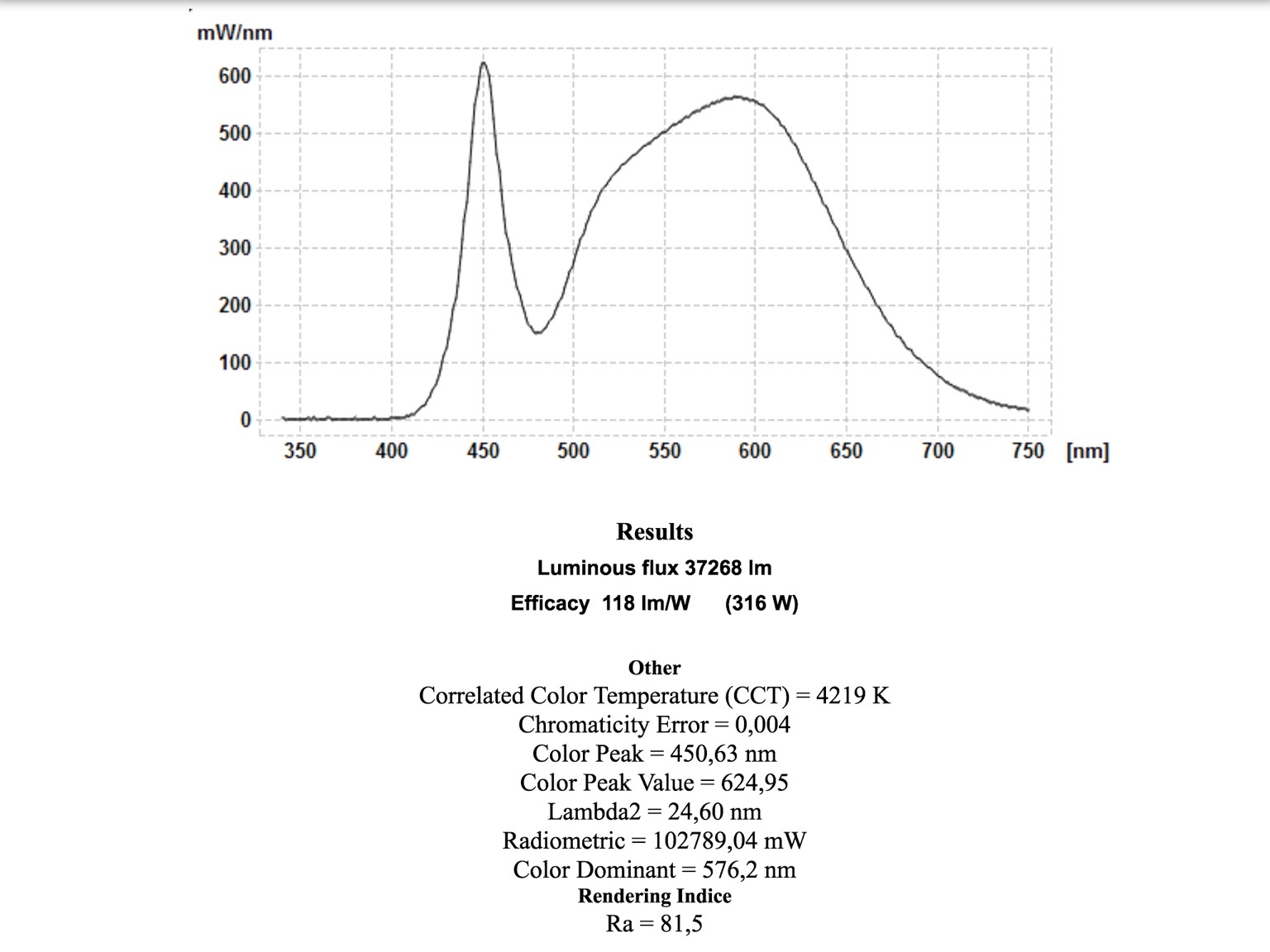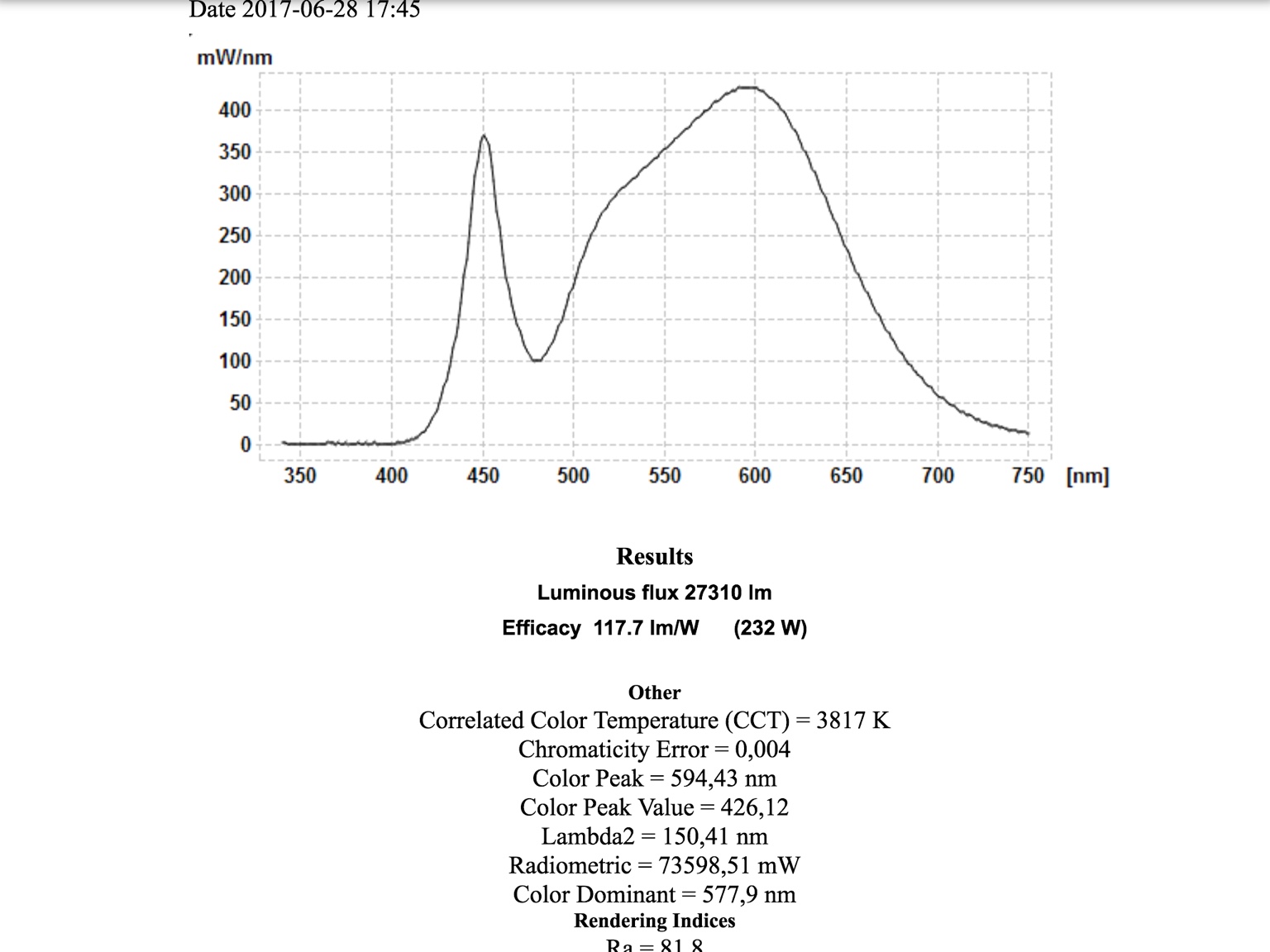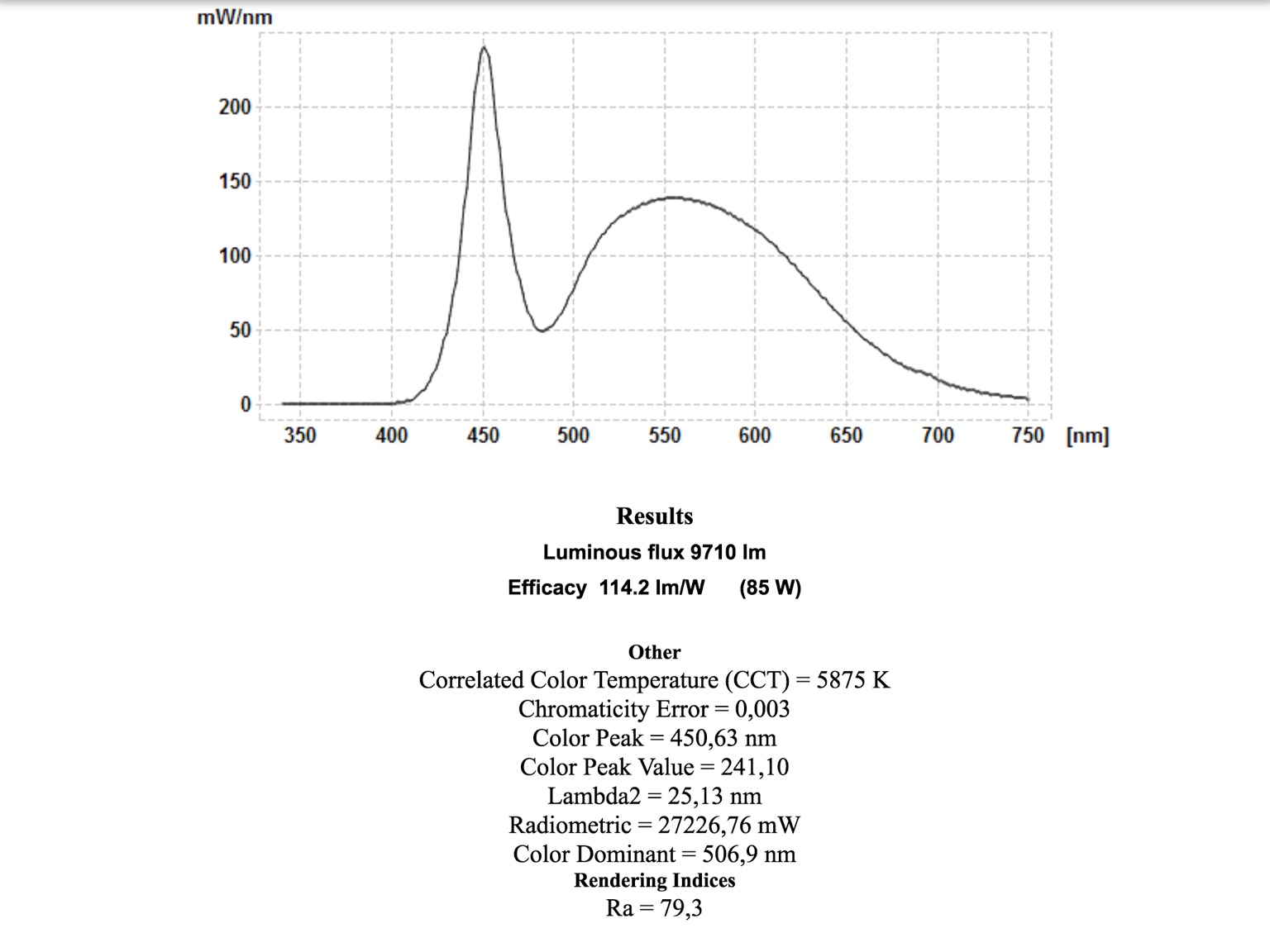Navigation
Install the app
How to install the app on iOS
How To Use Progressive Web App aka PWA On 420 Magazine Forum
Note: This feature may not be available in some browsers.
More options
You are using an out of date browser. It may not display this or other websites correctly.
You should upgrade or use an alternative browser.
You should upgrade or use an alternative browser.
LedTestLab
New Member
Is it better to use 2 300 watt leds or one 600 watt led??
Hi. Depends what you want to do and how large is your growing room. If you gave space then ofcourse you can do 2x300w more plants and 300W Led can do the same as 600 HPS in nowadays.
Mayne
Well-Known Member
lol, depends on what lights too.
2= 3oowatt realandro isnt the same as even 8 cfls,
2= 3oowatt realandro isnt the same as even 8 cfls,
Hi. Depends what you want to do and how large is your growing room. If you gave space then ofcourse you can do 2x300w more plants and 300W Led can do the same as 600 HPS in nowadays.
Do you work at LTL?
LedTestLab
New Member
Yes I work at LTL
- Thread starter
- #6
I am setting up a vegetative grow room and always used flourescents for vegetating but heard its better to go with leds with a full spectrum-something with all the colors needed for tight node growth or best to go with a more blueish led??? So confusing nowadays with all the different spectrums
- Thread starter
- #7
Mayne
Well-Known Member
weird thread, i smell oil
LedTestLab
New Member
Take 5500K-6500K Led's .. Blue day light, best for veg
LedTestLab
New Member
5500K-6500K same lighy as MH. Citizen clu series with 300W power can make very close to 600MH
- Thread starter
- #11
LedTestLab
New Member
Some long long time ago when nobody even wasn't thinking about leds some old grow man told me that if you can do mh and hps together its the best way for plant. Im not biological man, Im just working in LTL. And do some tests for cobs. Mixed 3500K ( red sun) with 6500K ( blue day light)






LedTestLab
New Member
So 1) diagram is from 3 COBS together 2 x 3500K and 1 x 6500K
2) diagram is from 2 COBS with 3500K
3) diagram is with 70w cob with 6500K
2) diagram is from 2 COBS with 3500K
3) diagram is with 70w cob with 6500K
So 1) diagram is from 3 COBS together 2 x 3500K and 1 x 6500K
2) diagram is from 2 COBS with 3500K
3) diagram is with 70w cob with 6500K
That's nice, but lumen and luminous flux don't really have any correlation to a light's prowess at growing plants. How about the PPFD (Photosynthetic Photon Flux Density), expressed in µmol per m² per second, preferably over a given area - measured at various points, in a grid pattern - at a given height? That would be useful.
LedTestLab
New Member
PPFD we can calculate if we know all led parameters ( lux, lumens, wattage) and of course the distance from light to plant. To calculate PPFD we need to take every wavelengths from 400nm to 700 nm...
There you got some calculations from 3 different wavelenghts:
I can determine the wavelength for each spectrum. For example: 550 nm - intensity 37268 (lumen), Beam width: 120 degrees, Height: 65 cm, Length: 1.22m (4ft) x 1.22 (4ft)
Hours per day (photoperiod): 18 h
Area Illuminated by light at a given distance: 1.3273 m ^ 2
Total Light output:
Radiant Flux: 55.171 W
PPF 152.19 μmol / s
PAR Watts: 33.102 W
Lumens: 37268
Intensity at distance:
Radiant Flux Density: 41.565 W / m ^ 2
PPFD: 114.66 μmoles / sec * m ^ 2
About Irradiance: 24.939 W / m ^ 2
Lux: 28078
Daily Light Integral (DLI): 7.4301 mol / day
450 nm - intensity 37268 (lumen), Beam width: 120 degrees, Height: 65 cm, Length: 1.22m (4ft) x 1.22 (4ft)
Hours per day (photoperiod): 18 h
Area Illuminated by light at a given distance: 1.3273 m ^ 2
Total Light output:
Radiant Flux: 843.05 W
PPF 1649.1 μmol / s
PAR Watts: 438.38 W
Lumens: 37268
Intensity at distance:
Radiant Flux Density: 635.15 W / m ^ 2
PPFD: 1242.4 μmoles / sec * m ^ 2
PAR Irradiance: 330.28 W / m ^ 2
Lux: 28078
Daily Light Integral (DLI): 80.508 mol / day
650nm - intensity 37268 (lumen), Beam width: 120 degrees, Height: 65 cm, Length: 1.22m (4ft) x 1.22 (4ft)
Hours per day (photoperiod): 18 h
Area Illuminated by light at a given distance: 1.3273 m ^ 2
Total Light output:
Radiant Flux: 457.33 W
PPF 2335.8 μmol / s
PAR Watts: 429.89 W
Lumens: 37268
Intensity at distance:
Radiant Flux Density: 344.55 W / m ^ 2
PPFD: 1759.8 μmoles / sec * m ^ 2
PAR Irradiance: 323.88 W / m ^ 2
Lux: 28078
Daily Light Integral (DLI): 114.04 mol / day
There you got some calculations from 3 different wavelenghts:
I can determine the wavelength for each spectrum. For example: 550 nm - intensity 37268 (lumen), Beam width: 120 degrees, Height: 65 cm, Length: 1.22m (4ft) x 1.22 (4ft)
Hours per day (photoperiod): 18 h
Area Illuminated by light at a given distance: 1.3273 m ^ 2
Total Light output:
Radiant Flux: 55.171 W
PPF 152.19 μmol / s
PAR Watts: 33.102 W
Lumens: 37268
Intensity at distance:
Radiant Flux Density: 41.565 W / m ^ 2
PPFD: 114.66 μmoles / sec * m ^ 2
About Irradiance: 24.939 W / m ^ 2
Lux: 28078
Daily Light Integral (DLI): 7.4301 mol / day
450 nm - intensity 37268 (lumen), Beam width: 120 degrees, Height: 65 cm, Length: 1.22m (4ft) x 1.22 (4ft)
Hours per day (photoperiod): 18 h
Area Illuminated by light at a given distance: 1.3273 m ^ 2
Total Light output:
Radiant Flux: 843.05 W
PPF 1649.1 μmol / s
PAR Watts: 438.38 W
Lumens: 37268
Intensity at distance:
Radiant Flux Density: 635.15 W / m ^ 2
PPFD: 1242.4 μmoles / sec * m ^ 2
PAR Irradiance: 330.28 W / m ^ 2
Lux: 28078
Daily Light Integral (DLI): 80.508 mol / day
650nm - intensity 37268 (lumen), Beam width: 120 degrees, Height: 65 cm, Length: 1.22m (4ft) x 1.22 (4ft)
Hours per day (photoperiod): 18 h
Area Illuminated by light at a given distance: 1.3273 m ^ 2
Total Light output:
Radiant Flux: 457.33 W
PPF 2335.8 μmol / s
PAR Watts: 429.89 W
Lumens: 37268
Intensity at distance:
Radiant Flux Density: 344.55 W / m ^ 2
PPFD: 1759.8 μmoles / sec * m ^ 2
PAR Irradiance: 323.88 W / m ^ 2
Lux: 28078
Daily Light Integral (DLI): 114.04 mol / day
- Thread starter
- #16
LedTestLab
New Member
Those parameters is from 2x Citizen Clu058 - 3500K and 1 x Led Cree 6500K ...But next time will do for all 3 of Citizen, because Citizen have full info of their products, no secrets from them, everything is in datasheet. For example Termal resistance, Cree dont show information about that.
And Citizen also give liftime tests...not like China leds 50,000h just in words, but they make tests and everything is in their site or they give info if you make some order.
Spectrum is from 2700K - 6500K... I think when you make , for example 300W grow light there is 2 options in my opinion. Make it from 6 COB's if you have more grow space 2,4 m^2. If you have grow space 1,2m^2 ( 4ft x4ft) the ofcourse make it from 3 or 4 cobs.
For 6 cobs you can run cobs at 50W power. With 3 or 4 Cobs you can run them all with 100 w power.
I have example for 3 COB's growlight. 2xCitizen 3500K at 100W power each and 1 Cree 6500K with 70W power (I use Cree because I was still waiting for new Citizen COB's).
With panel like this u can get 40965 lumens. And as I understand that you need not lumens but uMols/s/m^2 or mol/day.
But umols/s/m^2 and mols/day depends from lumens ))))
For this panel at 315W power with 40965lm you get PPFD : 375.13 uMols/s/m^2 and Daily Light Integral (DLI) : 24.308 mol/day
Light must be 65cm from plants
And Citizen also give liftime tests...not like China leds 50,000h just in words, but they make tests and everything is in their site or they give info if you make some order.
Spectrum is from 2700K - 6500K... I think when you make , for example 300W grow light there is 2 options in my opinion. Make it from 6 COB's if you have more grow space 2,4 m^2. If you have grow space 1,2m^2 ( 4ft x4ft) the ofcourse make it from 3 or 4 cobs.
For 6 cobs you can run cobs at 50W power. With 3 or 4 Cobs you can run them all with 100 w power.
I have example for 3 COB's growlight. 2xCitizen 3500K at 100W power each and 1 Cree 6500K with 70W power (I use Cree because I was still waiting for new Citizen COB's).
With panel like this u can get 40965 lumens. And as I understand that you need not lumens but uMols/s/m^2 or mol/day.
But umols/s/m^2 and mols/day depends from lumens ))))
For this panel at 315W power with 40965lm you get PPFD : 375.13 uMols/s/m^2 and Daily Light Integral (DLI) : 24.308 mol/day
Light must be 65cm from plants
BTzGrow
Well-Known Member
I just became informed a bit regarding DLI and Light Saturation. Are there any specific threads here on 420 with regards to the calculation and uses of such. Seems like the whole DLI changes the conversation with regards to gm/W to some extent. Lot of people out there using overkill in wattage and paying the power company for heat that represents waste.
It's not on the forum, but one of our members who seems to have more knowledge than half the LED grow light sellers gave me a link to an article on Purdue University's Extension website that discusses DLI (et cetera). It's a .PDF file, so you can download it and study it at leisure offline (if you like).
https://www.extension.purdue.edu/extmedia/HO/HO-238-W.pdf
https://www.extension.purdue.edu/extmedia/HO/HO-238-W.pdf
Mayne
Well-Known Member
-------
Similar threads
- Replies
- 17
- Views
- 495


